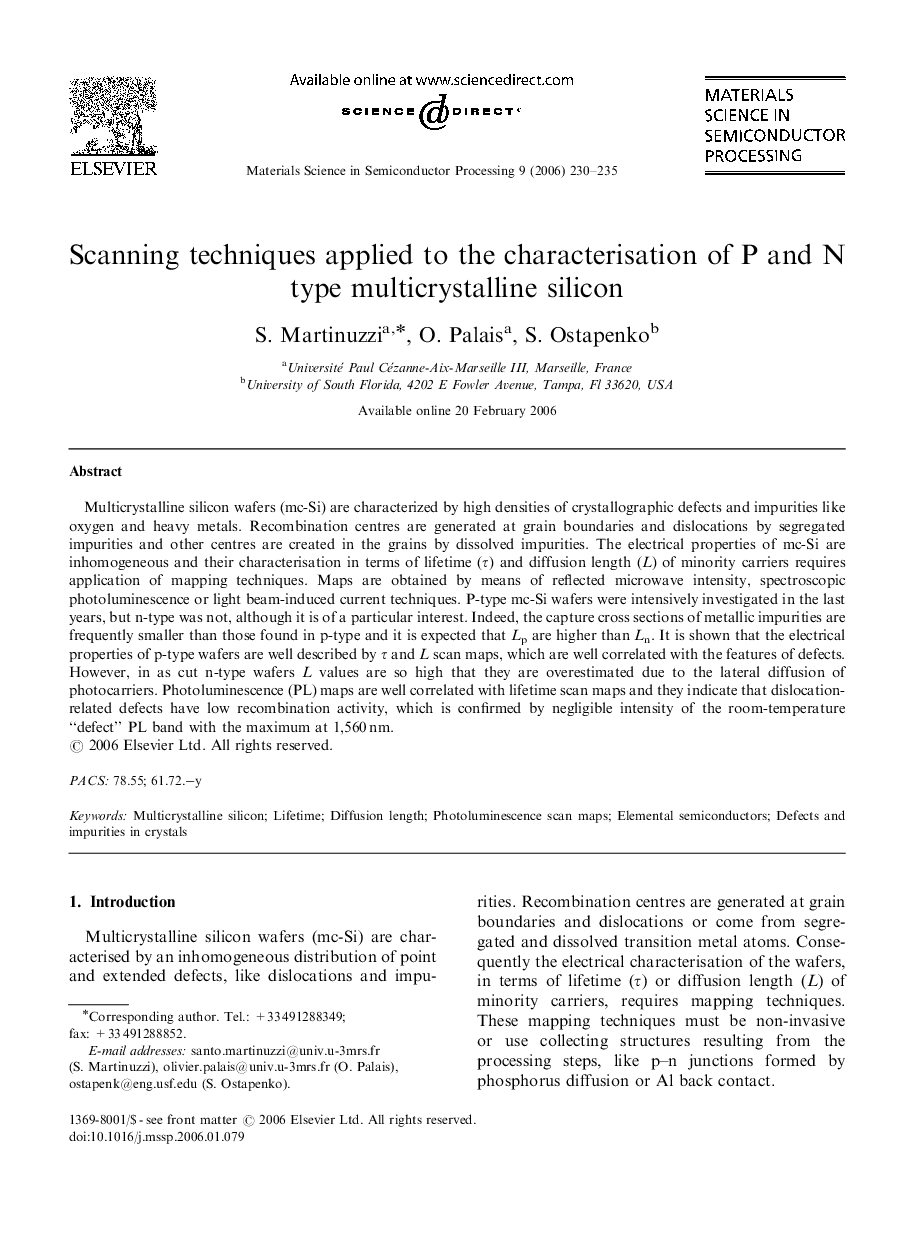| Article ID | Journal | Published Year | Pages | File Type |
|---|---|---|---|---|
| 729092 | Materials Science in Semiconductor Processing | 2006 | 6 Pages |
Multicrystalline silicon wafers (mc-Si) are characterized by high densities of crystallographic defects and impurities like oxygen and heavy metals. Recombination centres are generated at grain boundaries and dislocations by segregated impurities and other centres are created in the grains by dissolved impurities. The electrical properties of mc-Si are inhomogeneous and their characterisation in terms of lifetime (τ) and diffusion length (L) of minority carriers requires application of mapping techniques. Maps are obtained by means of reflected microwave intensity, spectroscopic photoluminescence or light beam-induced current techniques. P-type mc-Si wafers were intensively investigated in the last years, but n-type was not, although it is of a particular interest. Indeed, the capture cross sections of metallic impurities are frequently smaller than those found in p-type and it is expected that Lp are higher than Ln. It is shown that the electrical properties of p-type wafers are well described by τ and L scan maps, which are well correlated with the features of defects. However, in as cut n-type wafers L values are so high that they are overestimated due to the lateral diffusion of photocarriers. Photoluminescence (PL) maps are well correlated with lifetime scan maps and they indicate that dislocation-related defects have low recombination activity, which is confirmed by negligible intensity of the room-temperature “defect” PL band with the maximum at 1,560 nm.
